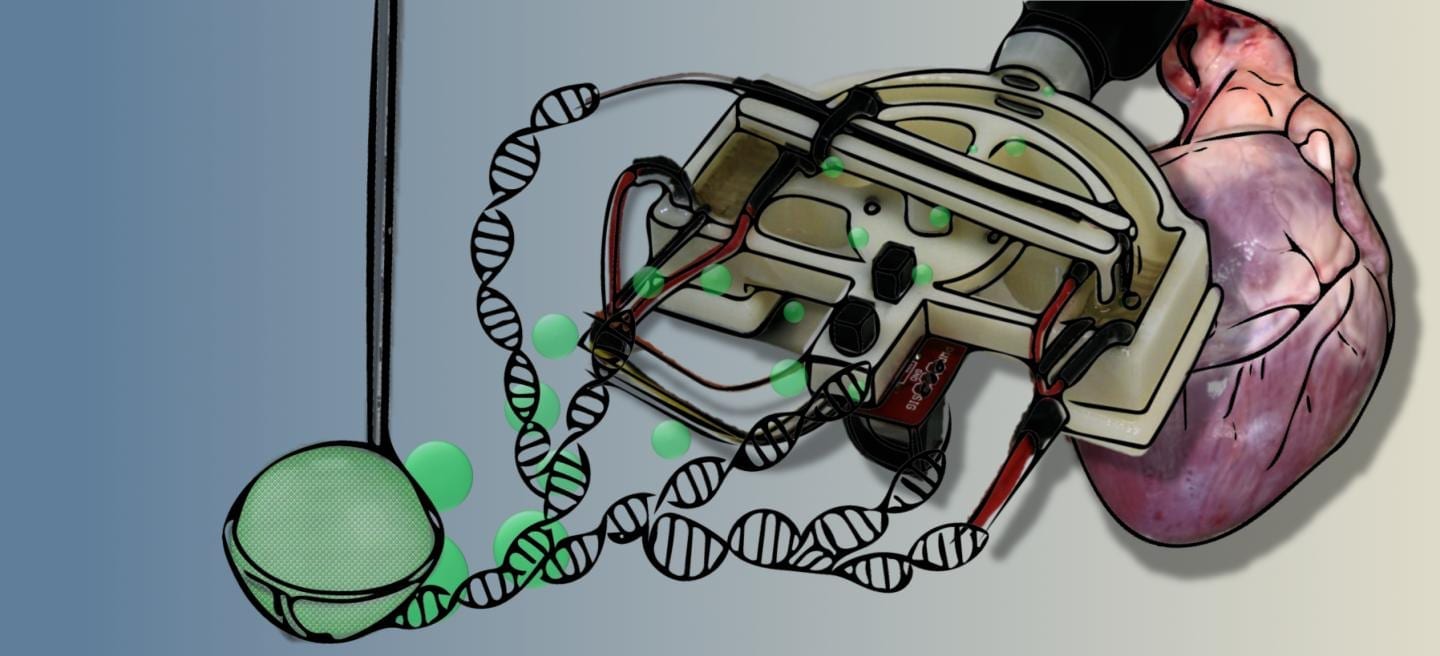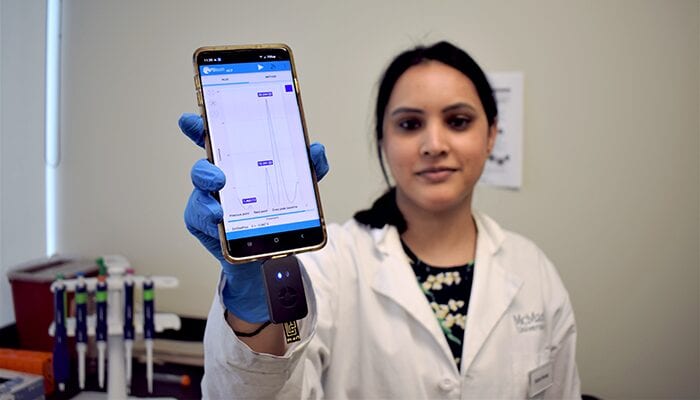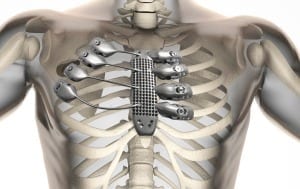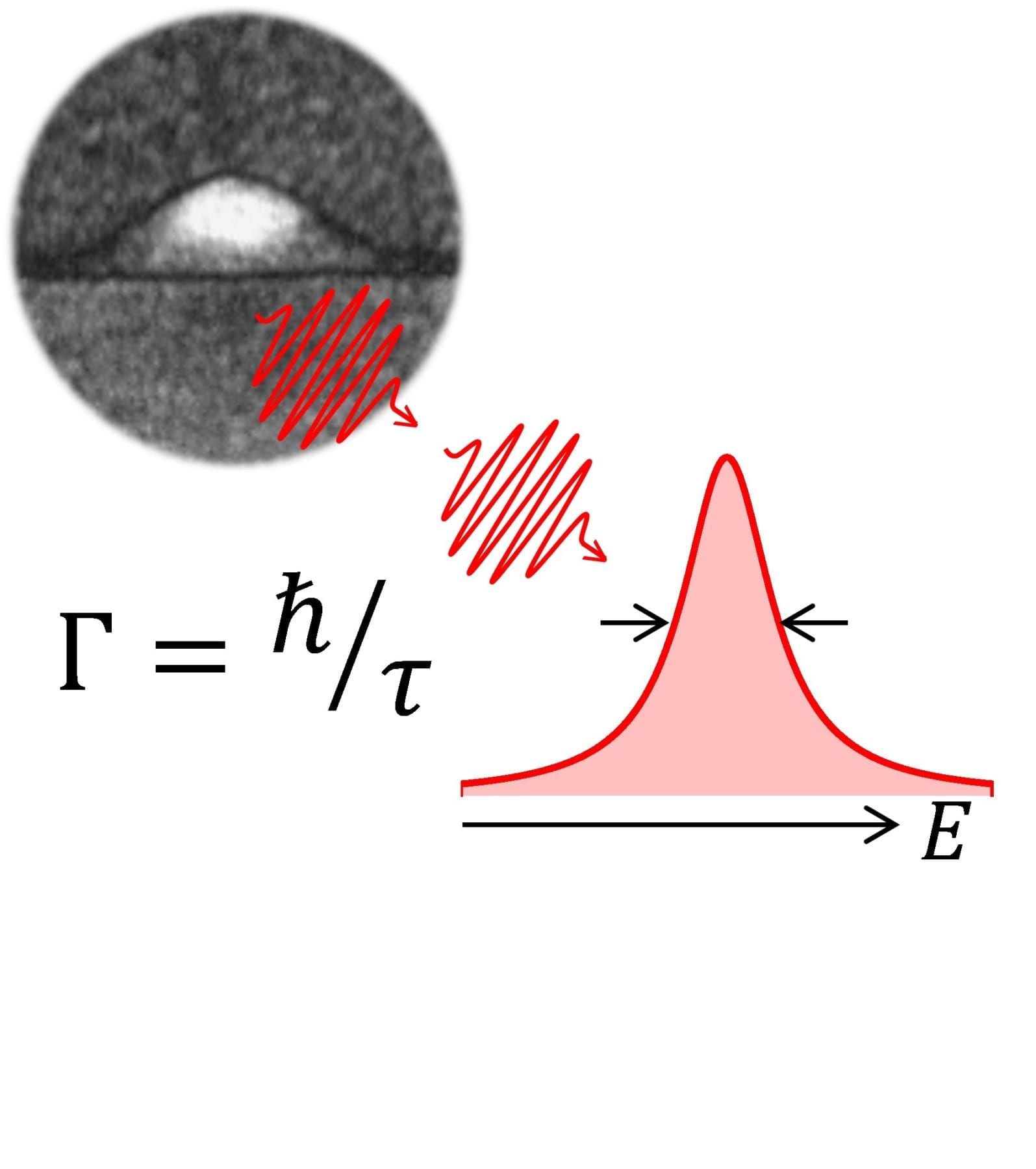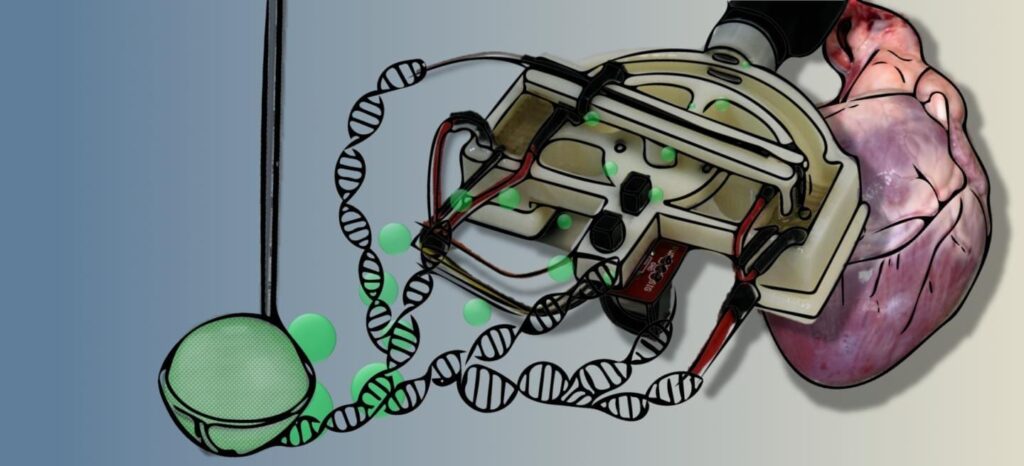
CREDIT
Dustin Harshman
A new diagnostic device created by a collaborative team of UA engineers and scientists may significantly reduce the amount of time necessary to diagnose tissue infections
When a patient arrives at a hospital with a serious infection, doctors have precious few minutes to make an accurate diagnosis and prescribe treatment accordingly. Doctors’ ability to act quickly and correctly not only makes a difference to the patient’s outcome, it determines whether the infection spreads to other patients in the clinic, and can even contribute to the development of drug-resistant bacteria.
Luckily for patients and doctors alike, a new diagnostic device created by collaborative team of UA engineers and scientists may significantly reduce the amount of time necessary to diagnose tissue infections. The device’s novel approach to molecular diagnostics, called DOTS qPCR, is faster, more efficient and less expensive than alternatives currently being used in clinics. The work is described online in the journal Science Advances.
“We have developed a completely different type of system than what exists out on the market,” said Dustin Harshman, a former graduate student in the Biomedical Engineering Graduate Interdisciplinary Program, currently a scientist at Ventana Medical Systems. “We want to see physicians get diagnostic information more rapidly and prescribe better initial therapies.”
Pathogens and infectious diseases are typically detected using a technique called polymerase chain reaction, or PCR. The method involves rapidly heating and cooling DNA molecules from a biological sample in a process called thermal cycling. This results in the amplification of the target DNA into millions, and even billions of copies. Scientists and physicians can then use the copies to identify the type of pathogen causing the infection. The problem is that most PCR tests can take up to an hour or more, and a physician’s decision-making window is typically less than ten minutes.
“With DOTS qPCR we are able to detect amplification and identify the infection after as few as 4 thermal cycles, while other methods are working with between 18 and 30,” said Jeong-Yeol Yoon, a professor in the Department of Agricultural and Biosystems Engineering and a joint appointment in the Department of Biomedical Engineering. “We can get from sample to answer in as little as 3 minutes and 30 seconds.”
DOTS qPCR, invented by Yoon and his research group, stands for droplet-on-thermocouple silhouette real-time PCR. The technology relies on the measurement of subtle surface tension changes at the interface of a water droplet suspended in an oil medium. The water droplet, which contains the target DNA to be amplified, is moved along a heat gradient in the oil to begin the chain reaction. As more copies of the target DNA are produced, they move towards the oil-water interface, resulting in measurable changes in surface tension. Remarkably, the size of the droplet can be measured using a smartphone camera, providing a method to observe the course of the reaction in real time.
“What’s interesting about the way we approached this is that we’ve developed a deep understanding of what’s happening at a molecular level in our system,” said Harshman, who initially struggled to determine how to monitor the course of the reaction. “That kind of understanding gave us the ability to figure out why it was failing, and then leverage that failure as an advantage to create a completely new method.”
In addition to much faster diagnosis times, the system does not require samples to be completely free of other contaminants. This can save valuable time otherwise spent preparing samples for testing.
“The system still works with relatively dirty samples,” said Yoon. “We can use very minimal processing and still make the detection in a short time.”
Yoon emphasized that DOTS qPCR is inexpensive compared to its counterparts, which employ costly and time-intensive testing methods involving fluorescence detection, lasers and dark chambers.
“It’s easy to use, smartphone-integrated and saves money and labor using expensive equipment,” explained Yoon. “This technology has a lot of commercial potential, and we’d be happy to work with industry to bring it to market.”
Read more: New medical device concept could reduce time to diagnose infections
The Latest on: Diagnose infections
[google_news title=”” keyword=”Diagnose infections” num_posts=”10″ blurb_length=”0″ show_thumb=”left”]
via Google News
The Latest on: Diagnose infections
- Viruses Newson May 8, 2024 at 5:00 pm
May 2, 2024 — Researchers have found that a brain disorder associated with flu (influenza-associated encephalopathy, or IAE) can be caused by the influenza virus entering the brain from the ...
- Best Antivirus Software for 2024on May 4, 2024 at 11:00 pm
Clifford is a managing editor at CNET, where he leads How-To coverage. He spent a handful of years at Peachpit Press, editing books on everything from the first iPhone to Python. He also worked at ...
- What to know about the bird flu outbreak in the US after virus fragments found in milk sampleson April 24, 2024 at 6:29 pm
Several dairy cows have been infected, resulting in milk samples showing inactive remnants of the virus, and one human case has been confirmed. Health officials say the food supply is safe and the ...
- Next pandemic likely to be caused by flu virus, scientists warnon April 20, 2024 at 1:40 pm
An international survey, to be published next weekend, will reveal that 57% of senior disease experts now think that a strain of flu virus will be the cause of the next global outbreak of deadly ...
- Man who caught virus from a monkey in a critical condition – B virus explainedon April 16, 2024 at 4:33 am
Colin Michie does not work for, consult, own shares in or receive funding from any company or organization that would benefit from this article, and has disclosed no relevant affiliations beyond ...
- West Nile Virus Infectionon April 12, 2024 at 5:00 pm
There is no established treatment for WNV infection. Currently, prevention and control are the only measures that help decrease the morbidity and mortality associated with WNV infection. As the ...
- Bird flu detected among chickens in Texas and Michiganon April 12, 2024 at 4:16 am
Ca-Maine Foods, largest fresh egg producer in US, temporarily halts production at one Texas facility after discovering virus Avian influenza has been detected among chickens in Texas and Michigan ...
- A Random Influx of DNA from a Virus Helped Vertebrates Become So Stunningly Successfulon April 11, 2024 at 5:00 pm
Retroviruses such as the HIV virus carry out this genetic hacking by reversing the sequence of the gene readout. They inject their RNA into the cells they infect, which serves as the code to make ...
- Measles outbreak in Chicago: What to know about the viruson March 27, 2024 at 9:50 am
Though most vaccinated people have close to zero chance of contracting the virus, here’s what to know about the disease. Yes, they do. In fact, measles, which was considered eliminated in the ...
- Inside the Coronaviruson February 3, 2024 at 9:56 am
We show how the immune system would normally attempt to neutralize virus particles and how CoV-2 can block that effort. We explain some of the virus's surprising abilities, such as its capacity to ...
via Bing News







